On the Rocks – A Day at Nottoway Falls
In August, I described a set of cascades that form a major knickpoint on the Nottoway River in the Southside Virginia Piedmont. Last Saturday, my Structural Geology Seminar spent a day on the rocks studying the geology of this expansive outcrop.
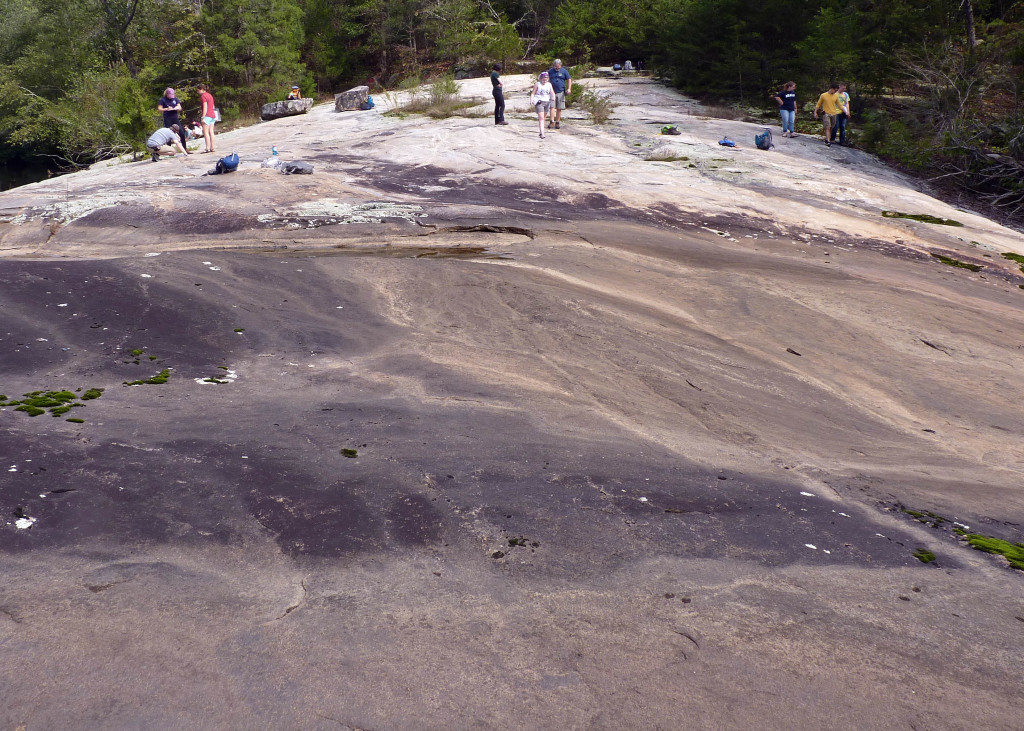
View to the north of the large sloping outcrop at the uppermost cascade, Falls of the Nottoway River, south-central Virginia.
The outcrop we focused on is the uppermost cascade which exposes ~2,000 m2 of granitic gneiss. At low water much of the bedrock channel is dry. The lower part of the outcrop is coated with a brown patina of fine-grained sediment and a Fe- and Mn-oxide coating produced by cyanobacteria. Many rock coatings, in a variety of climates, are modulated by microbes growing on the rock surface. The waters of the Nottoway River rarely reach the upper part of the outcrop and the bedrock is less stained, although lichen grows here and there are patches of moss and xerophytes—primary plant succession at work. The outcrop is natural, but was quarried to some degree in the 19th century and an old mill sat immediately downstream from the first drop.
My students worked in teams of three—they mapped the outcrop at a detailed scale, determined the cross cutting relationships between the various rock types and geologic structures, and measured the orientation of geologic contacts, foliation, lineation, dikes, shear zones, veins, and fractures.
What follows are a few annotated vignettes from different parts of the outcrop.
The geologic contact between the leuco-granitic gneiss (left) and the fine-grained biotite-bearing granodioritic gneiss (right) is well-exposed. A pegmatite dike cross-cuts banding/layering in the biotite-bearing gneiss. The biotite granodiorite was intruded by the lighter colored granite, and then both rocks were deformed in a ductile manner, effectively transforming them into lineated gneissic rocks.
In this photo an older biotite-rich gneissic inclusion is surrounded by the younger granitic gneiss. Both rocks are strongly lineated (oriented NE to SW). Strain is heterogenous as evidenced by the deflection of the biotite-rich gneiss in a cryptic high-strain zone. The asymmetry and offset along the discrete fault is consistent with right-lateral (dextral shear). There is geological craziness at the far end of the biotite-rich gneiss.
This image is taken looking down on the sloping outcrop surface, and neatly illustrates a narrow shear zone that offsets three mafic layers (green) in the granitic gneiss. The shear zone has an apparent left-lateral (sinistral) offset of ~50 cm, and quartz (orange) precipitated in dilational gaps along the shear zone.
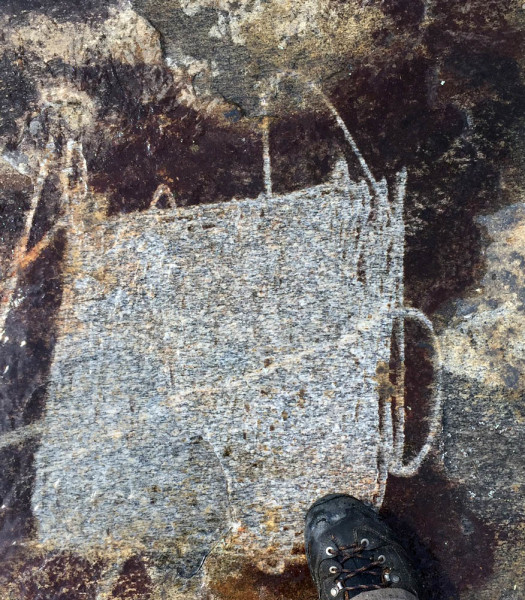
The power of power washing. Newly cleaned outcrop surface at Nottoway Falls, not the dark coating on the outcrop surface.
This trip was also a trial for our new Geology Department power washer, which we’ve acquired in an effort to ‘beautify’ many outcrops in the Piedmont and Blue Ridge. As I’ve noted before, in Virginia’s temperate and humid climate factors conspire to cover up and weather bedrock exposures—the power washer will help us keep significant outcrops clean for future generations of W&M geologists. At the Falls of the Nottoway we filled a rain barrel to provide the pressure head to feed the power washer. Lichen peeled off the outcrop with the use of the medium-duty nozzle, whereas the mineral-stained surfaces required the high pressure fitting which, actually blasted away the upper few millimeters of the rock surface. Good times, but slow going.
As the semester progresses, two teams of students will continue with our research at Nottoway Falls , they’ll compile the structural data we obtained and make quantitative measurements on the samples we’ve collected. Stay tuned!
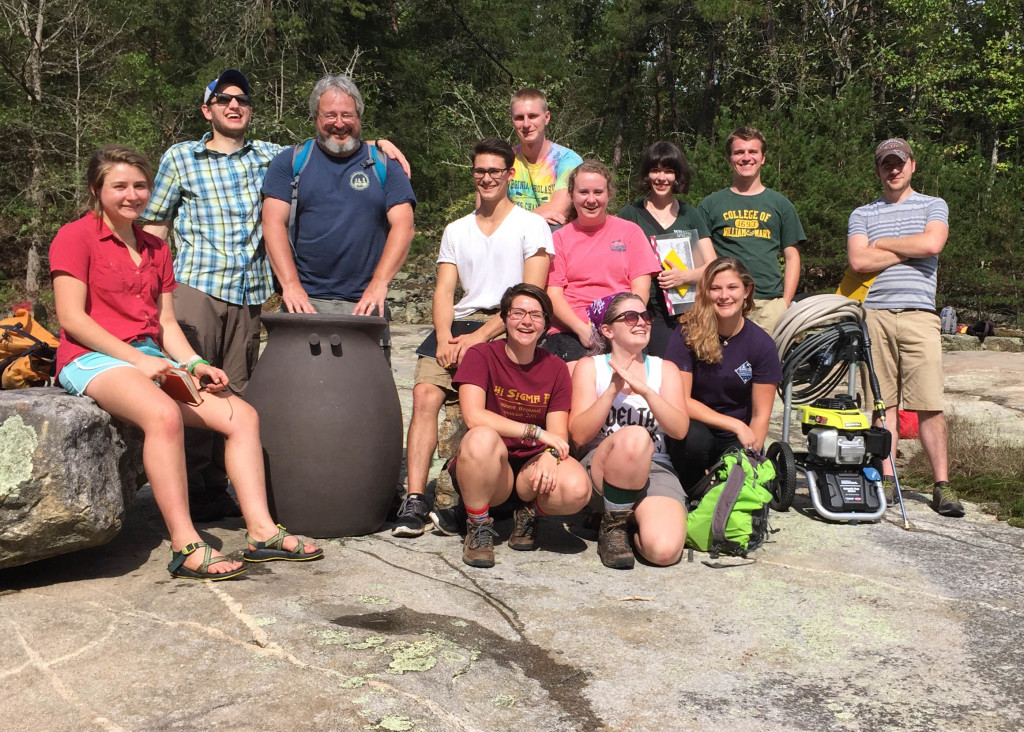
The 2016 William & Mary Structural Geology Seminar at the Falls of the Nottoway River, Virginia. Note the rain barrel and power washer for scale.

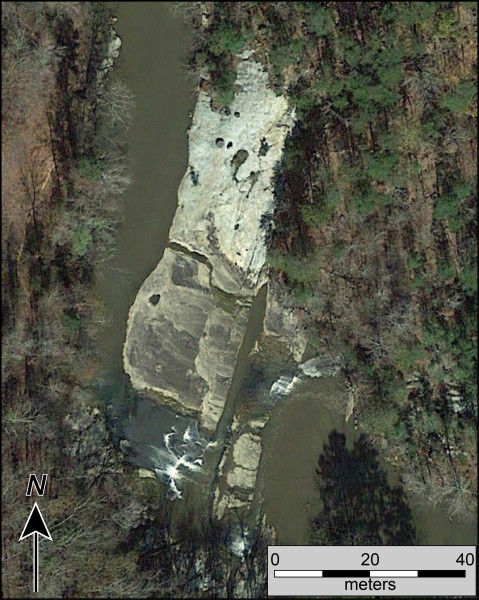
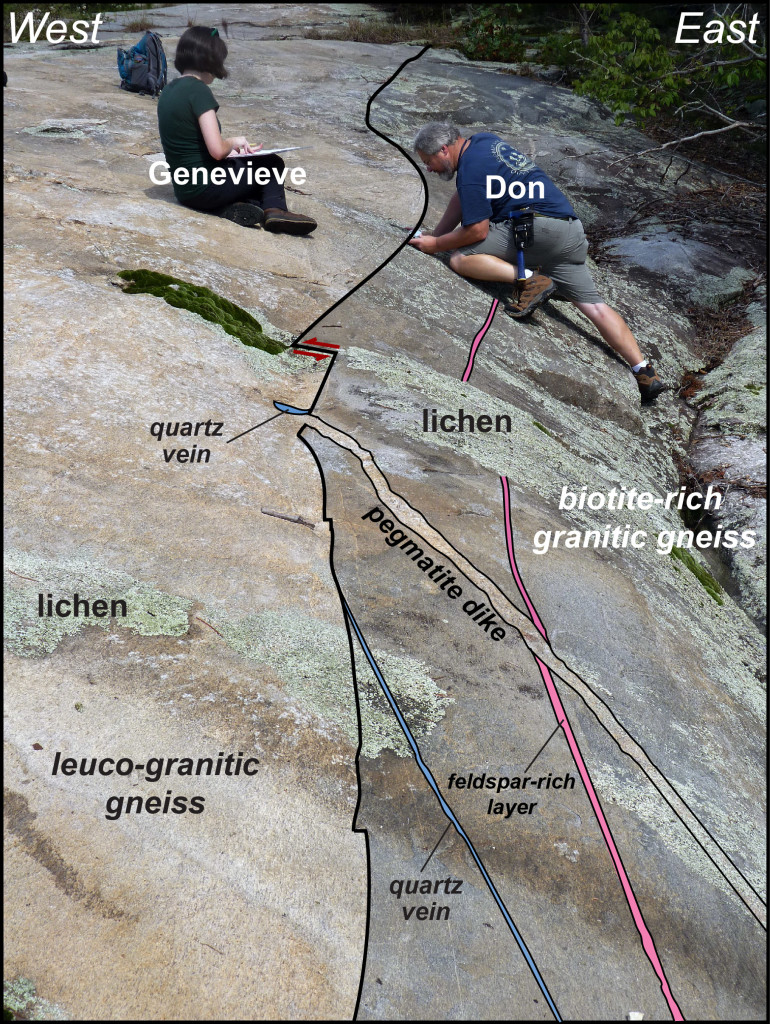
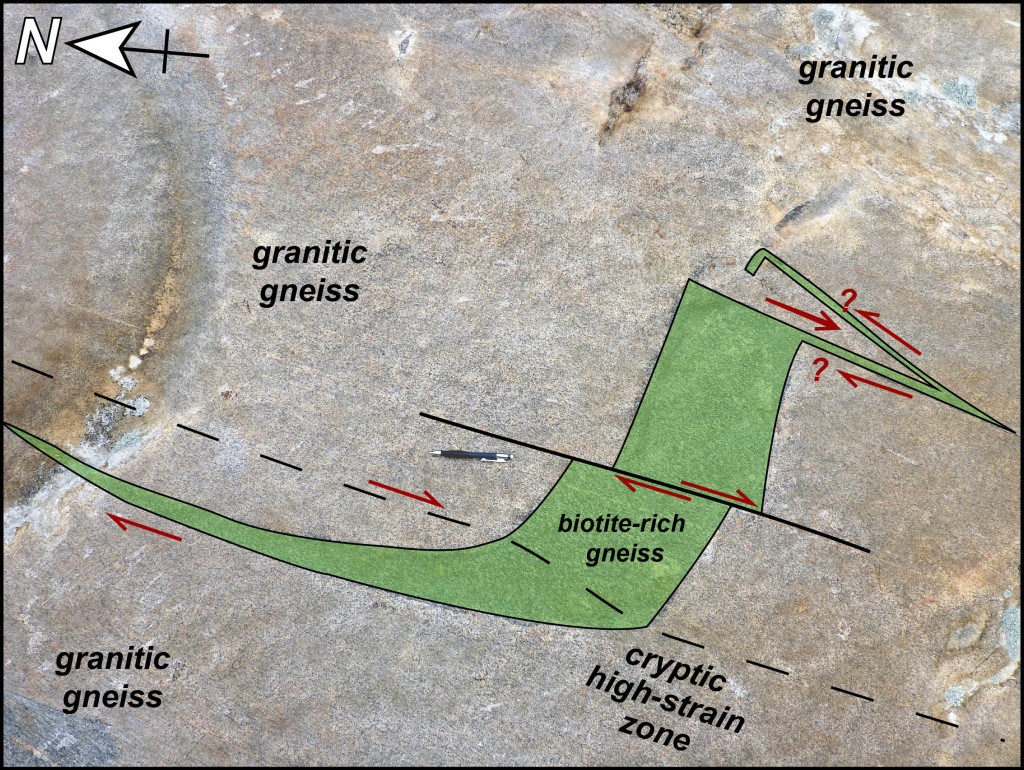
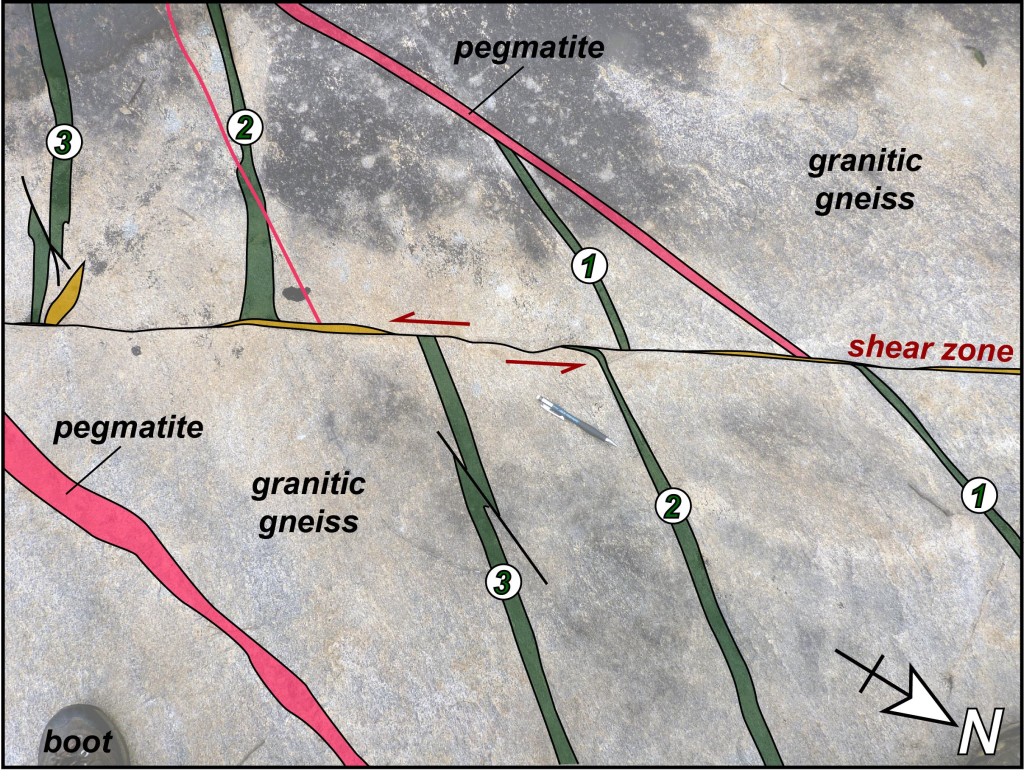

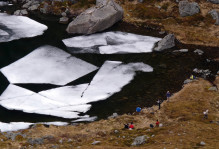
No comments.
Comments are currently closed. Comments are closed on all posts older than one year, and for those in our archive.